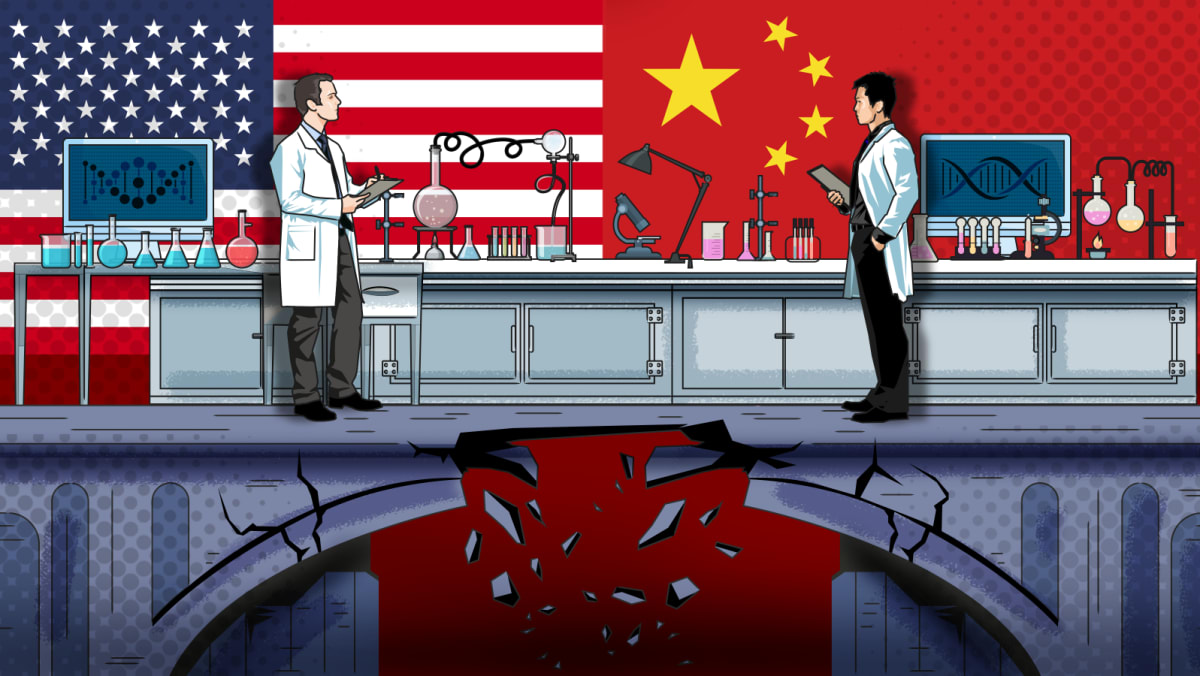Even before the STA lapsed, US-China scientific cooperations were already heading towards troubled waters as geopolitical tensions escalated, say analysts.
Dr Reyes said US-China scientific partnerships have generally declined and entered what he described as a “cold-storage period”.
Research findings bear this out. The proportion of Sino-American joint publications, relative to US research alone, peaked at 13.9 per cent in 2019 before dropping to 11.7 per cent in 2023, according to a paper published in February this year by Professor Tang Li from the School of International Relations and Public Affairs at Fudan University.
Similarly, the share of US-China collaborative research compared to all Chinese articles saw a sharp decline, falling from 12.2 per cent in 2017 to 5.7 per cent in 2023.
This overall trend had already been spotlighted in another research paper, co-published in February 2022 by professors at Ohio State University in the US and Yangzhou University in China.
“The drop in China-USA cooperation can be seen beginning in 2019, before the (COVID-19) pandemic … the patterns suggest that political tensions, more than the pandemic, influenced the drop in China-US cooperation,” the paper stated.
A trigger point came in 2018 when the Trump administration in the US launched the so-called China Initiative, say analysts. The programme targeted scientists suspected of connections to Beijing, probing potential breaches of national security related to leaks of sensitive scientific information.
A 2022 study by lawyer and law professor Andrew Chongseh Kim revealed that cases involving Chinese professors under the Economic Espionage Act were more likely to be publicised and met with harsher punishments compared to non-Asians.
The study also found that up to one in three Asian scientists were falsely accused, with charges either being dropped before trial or dismissed by juries and judges due to lack of evidence.
The China Initiative was officially ended by the Biden administration in early 2022. A senior US Justice Department official stated the focus on China had been “too narrow”, and the new approach would be a broader, “threat-driven” strategy targeting Russia, Iran and North Korea as well.
Still, analysts say there has been a lingering impact. HKU’s Dr Reyes told CNA that based on his interactions with academics in the US and globally, universities over the past two years have been extra careful to avoid running afoul of the law when it comes to collaborations involving Chinese scientists.
“It’s a difficult position for institutions,” he said, “because nearly every field of research could potentially be viewed as a legal risk or repurposed by China for hostile use.”
A study published by the Stanford Center on China’s Economy and Institutions in July revealed that the number of Chinese-born scientists leaving the US has surged by 75 per cent since the launch of the China Initiative, with two-thirds of them moving to China.
The federal government is the largest single source of funding for basic research in the US. However, the study found that 45 per cent of researchers with federal grants prefer to avoid applying for them.
Among this group, 84 per cent cited concerns about potential legal liability due to errors in forms and disclosures, while 65 per cent expressed worries that their collaborations with Chinese researchers or institutions might place them under suspicion.
